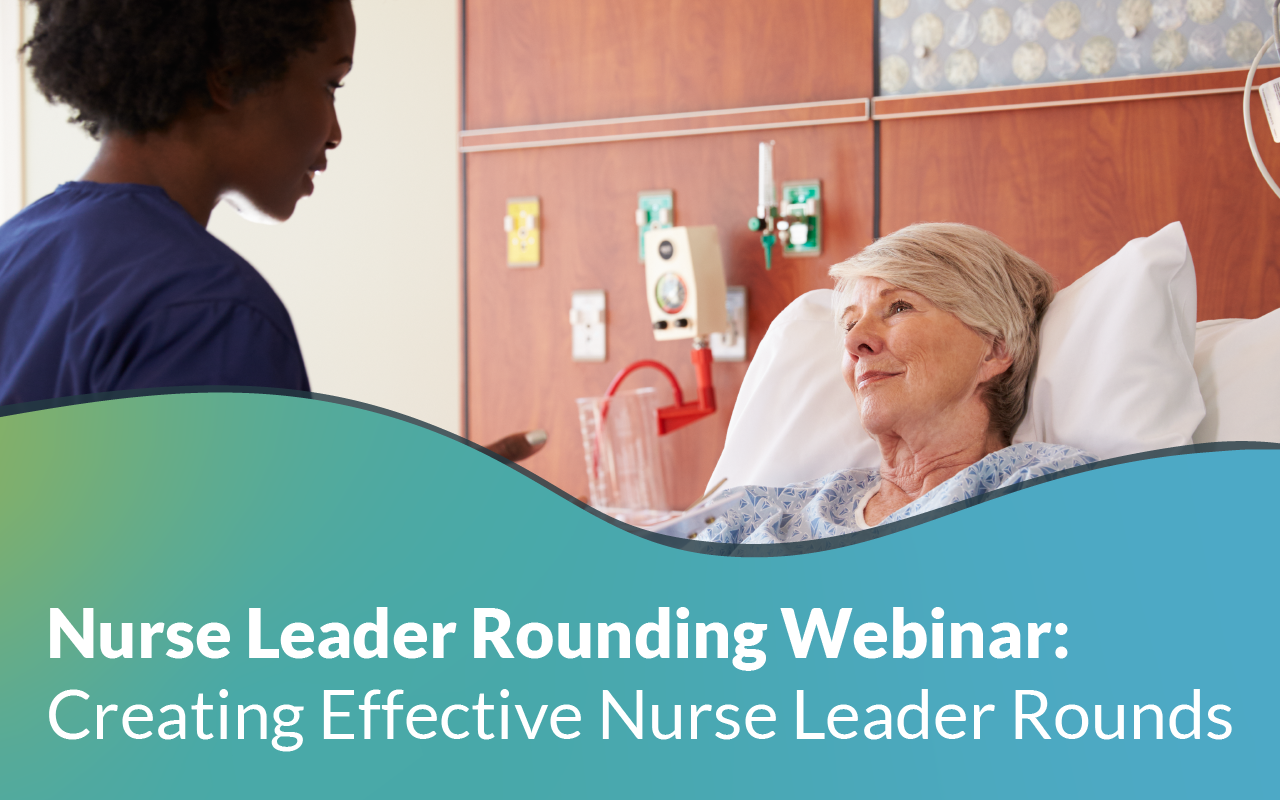
5 min read
Effective and Active Listening to Prevent Patient Experience Issues
Nobl Health Jan 3, 2022 4:14:00 AM
Customers today have choices, multiple choices. Regardless of whether the need is for pet supplies, home repair or healthcare, consumers today are more informed and more likely than ever to ‘shop around.’ Increasing and sustaining market share for any product depends on satisfying the purchaser. For decades, the healthcare industry was exempt from some of this scrutiny because insurance companies paid the bills submitted and patients followed the advice of their medical provider about the need for services. But that all changed in the 1980s and 1990s when payment models were shifted to diagnostic related groups (DRGs) and Quint Studer changed how hospitals looked at patient experience. His Studer Group published their groundbreaking research on the impact of hourly rounding in 2007 and processes at the bedside began to change.
With the adoption of the Affordable Care Act in 2009, a new model of reimbursement, at least for federally funded programs, was also introduced. This value-based purchasing created an expectation that facilities with the best outcomes would be paid the most. Over the next several years, patients’ perceptions of their care experience, as measured by the HCAHPS survey incrementally increased as a payment component. Many organizations began to focus primarily on improving patient satisfaction scores with their HCAHPS strategy utilizing scripting and other techniques to raise responses to specific questions. In 2010, the thought leadership arm of The Beryl Companies officially became Tthe Beryl Institute [link 1] a unique hybrid as a membership and thought leadership organization. The purpose of the Institute was then, and remains today, to be a ‘community of practice working daily to bring people together, expand knowledge and advance practice from every corner of the globe.’ They have sustained their commitment to elevate the idea of patient experience and continue efforts to establish this field of practice in which people work, contribute, build careers, and impact healthcare outcomes. The purpose and commitment of Beryl closely matches the mission, vision, and values of Nobl, a platinum level supporting partner of the institute. Nobl’s trifold model – people, process and technology – blends customer needs with industry patient experience best practices.
Leaving a patient and family delighted with their experience and likely to recommend the facility to others is the top priority of any patient experience team. Effective listening to the needs of the patient/family and prompt resolution of issues or concerns that arise are critical practices to reach this goal. Consistent and purposeful leader rounding accomplishes both aims. With the Nobl Rounding Pplatforms, leaders can efficiently plan their rounding cadence, track concerns, notify resolving individuals/ departments, and analyze concern trends. These practices are pivotal to prevent concerns from becoming significant grievances and to foster effective communication in hospitals. Let’s drill down into effective listening and prompt resolution of issues.
Active and Effective Listening
Ralph Kliem, PMP, offers the following definitions of active and effective listening [link 2].
Active listening occurs when the listener attempts to understand as clearly as possible what the speaker says.
Effective listening is attempting to understand the perspective of the speaker and empathize, not sympathize, with him or her.
Moving to an understanding of speaker perspective and empathy could arguably be the most important skill needed to truly adopt a culture of inclusion and trust. Perspectives are always impacted by any number of biases, both unknown and acknowledged. When leaders center themselves, become consciously ‘present’ prior to beginning a patient round, and call to mind the concept of effective listening, they are much more likely to form a trusting relationship with the patient and family that supports the provision of an individualized patient experience. Kliem offers four steps to effective listening that leaders can adapt to their own style or circumstance.
Four Steps for Effective and Active Listening
Hear

Hearing involves picking up the sounds of the speaker by allowing the person to talk, avoiding interruptions, observing nonverbal behaviors, and using open-ended questions.
Clarify
The listener must make some effort to clarify what is said by asking questions, maintaining two-way communication, paraphrasing what was said and verifying for accuracy. Focus on facts and data.
Interpret

Interpretation requires ascertaining the credibility behind what the speaker said but also an understanding of what was said. Identify main ideas and avoid selective hearing.
Respond

Leader rounding responses happen in two different contexts – immediate information and the delayed component of ‘closing the loop’. Often patients and family members express frustration that they aren’t provided with follow-up answers and never know if anything was done. Experience teaches us that besides fixing the immediate issue, ‘feeling valued’ is often the most desired outcome by consumers. When leaders make the time to circle back, patients feel that someone of importance cares.
Prompt Resolution of Issues
What is meant by prompt? Prompt is a term that implies swift action but is nonetheless still very subjective in nature. A leader might feel that they are promptly addressing an issue if they are able to address it within 24 hours or less. To an angry or upset patient and family 24 hours is a lifetime. When leaders have technology that allows them to document an issue and to send it immediately off to an accountable individual or department, patients see something happening in real-time. Prioritizing issues as part of the message, helps the responding party to fix serious issues sooner and arrive prepared to implement active service recovery. It may not be enough to just fix the original issue, adding in a complimentary meal, free parking, or gift certificate to the hospital gift shop can help to repair the trust of the family.
Even if issues are addressed as soon as the patient shares their concern, it may already be too late to change the overall patient perceptions of the experience. The best way to resolve issues is to not allow them to occur. Prevention of issues is accomplished by studying concern trends and linking those trends to facility performance improvement initiatives. While this may not provide true service recovery to the patient with an issue, it can cause facilities to change a process, so that the issue never recurs.
A simple example of this concept comes from a review of trended concerns related to room cleanliness. Leaders repeatedly heard from patients and families that trash cans within rooms were overflowing. At first, leaders doubted the credibility of this issue because EVS had been conscientiously emptying receptables every shift. But when the qualitative comments were reviewed, it became clear that the problem wasn’t the frequency of emptying the cans, but the timing of when the cans were emptied. EVS staff had been instructed to empty the cans at the end of the shift. On the 12-hour day shift, many cares and treatments were completed early in the day, resulting in additional waste that then filled the cans until early evening when they were again emptied. If family joined the patient for dinner, takeout containers or room service disposables wouldn’t fit in with the already accumulated trash. On the night shift, late visitors who brought evening snacks or gifts to the patient, once again filled receptacles early in the shift. Evening cares, like replacing disposable under pads or changing out IV set-ups added medical waste. Involving direct care staff from both nursing and environmental services in the performance improvement initiative resulted in a simple solution – larger garbage cans. If there was space for waste within the cans, all users perceived that the room was cleaner. Although this did involve purchasing the new cans, the ongoing issue of room cleanliness was eliminated for subsequent patients.
Busy leaders must consistently complete patient rounds to know the true perceptions of patients and families. They need to be aware of patients who have had service issues during previous encounters with the health system or in another department of the facility. They need to be able to document patient and family concerns quickly and easily in a systematic manner that provides both quantitative and qualitative data. When possible, immediate issue resolution and service recovery need to occur. They also need to routinely study trended data to drill down to real problems that might be pervasive within the organization
Written by Teresa L Anderson, EdD, MSN, NE-BC, Nobl Chief Nursing Officer
New Free eBook
Best Practices for Sharing and Reviewing Data from the Nobl Rounding Platform
Beryl Institute Case study
Improved First Impressions at Your Front Door - Patient Ambassador Rounders Enhance the Patient Experience of a Busy Emergency Department
Recent Posts

Five Key Factors to Consider in Pediatric Leadership Rounding



